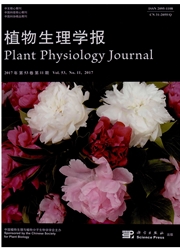

 中文摘要:
中文摘要:
复叶作为单叶对于环境适应进化的产物,更能适应恶劣的外界机械压力。绝大多数豆科植物具有典型的复叶结构,其发育过程反映了植物复叶发育的基本特征。本文介绍了近年来大豆、豌豆、蒺藜苜蓿和百脉根4种豆科植物复叶发育分子机制的研究进展,比较了它们在复叶发育过程中的异同,以期明晰豆科叶片复杂的发育机制,为豆科作物分子育种改良提供理论指导。
 英文摘要:
英文摘要:
Compound leaf is the outcome of single leaf adapting to environment, which makes plants acclimatize to external mechanical stress better. Most legume plants have typical compound leaf structure; their leaf development process can reflect the common characters of compound leaf in plant kingdom. In this paper, we review recent advances in the molecular mechanisms modulating leaf development in four legume plants, Glycine max, Pisum sativum, Medicago truncatula and Lotus japonicus. With comparison on their molecular mechanisms during leaf development, it reveals the complex developmental mechanism of legume leaves, and provides theoretical guidance for the molecular breeding of legume plants.
 同期刊论文项目
同期刊论文项目
 同项目期刊论文
同项目期刊论文
 期刊信息
期刊信息
